
Get-up-and-go
Why birds are seeking energy sources right now
As winter hits, trees and shrubs go dormant above ground for the season, biding their time until spring arrives. That means a reduction of food sources like nectar, berries and insects for our wild bird friends.
Many of our native birds such as the kākā, kererū, korimako, tūī and tauhou feed primarily on fruit and insects. This is why it’s so important to plant native species if you have the opportunity. When the right variety of species are planted, the plants provide nectar, seeds and berries all year round. Leaving leaf litter on the ground can promote insect life and therefore provide a source of sustenance for the birds.
However, during winter this source can dry up. Worms and beetles will head further underground until temperatures rise again.

By setting up an energy feed station birds have access to a reliable source of good quality fats. They are at their coldest in winter, using more fat reserves to survive chilly nights and fly longer distances to find food. As a result they search out rich sources of fat and protein to sustain them until natural food starts appearing again in spring. And as Tahu Mackenzie, educator at the Orokonui Ecosanctuary and co-designer of the Peka Peka native bird feeder likes to say, “the more they feed, the more they breed!”
We make our energy range in-house from a base of local and sustainably sourced soya oil, wheat and peanut flour. Then we add a range of flavourings such as natural berry extract, peanut flour and most recently, freeze-dried blueberry skins to provide variety.
While vegetable fats provide the energy birds need to keep warm and make the next flight, a source of protein and other nutrients is useful too. Once fat reserves are exhausted birds draw on protein stashes to sustain them until the next meal. That’s why we blend mealworms and our home-grown nutrient-dense seeds into the range too.
Shaped into a range of cakes, truffles, logs and pellets, there’s a size in the energy range to suit every feeder set up. Visitors tend to arrive en masse once a stocked feeder is spotted. You can expect the colourful tauhou (waxeye / silvereye), sparrows, yellowhammers and songbirds.
Feeders should be cleaned regularly and clean drinking water should be on hand nearby. Fruit is also popular in winter. Serving up cut-up apples (cores removed) or kiwifruit is a good way to provide sustenance for tired birds.

Try stocking a feeder with calorie-rich food this winter. You’ll not only provide precious kilojoules of energy for tired birds but also bring colour and life back into the garden.
Related Products
Related Posts
These bird lovin' social accounts are creating a flap!
Social media has made it super easy to connect with other bird lovers around the country and beyond. If you’re lookin...
Meet the tauhou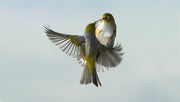
The lean, green Energy-Food-consuming machine is prolific in gardens right now. What do you know about them? Whether ...
How to compost packaging from our Wild Bird range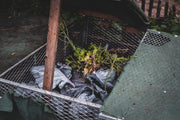
Topflite aims to be part of the consumer packaging solution; not the problem. That’s why we’ve set the ambitious goal...
Grow your own native plants for native birds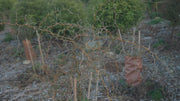
Adding a kōwhai or a kapuka to your garden is a great way to bring in the birdlife. Luckily, both these native specie...
To the hydration stations! How to help wild birds hydrate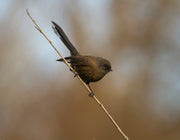
Around the globe hot weather is more common than ever. Since 1884 the top ten warmest years on record have all occurr...
Are you all ears? How to recognise five common New Zealand bird calls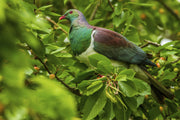
Can you pick a tūī from a korimako? Would you know a rifleman if you heard one? Here are five commonly-heard songs fr...
A handmade Christmas wreath
Got a last minute addition to your gift list, or want to add an extra festive touch to your home this year? Instead o...
Lucky Duck makes happy ducks
We’re seeing evidence that there’s a lot less bread being fed to ducks both in backyards and local parks and gardens ...
How to feed your garden birds if you want to attract and support native species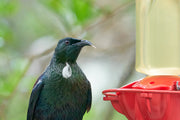
Shutterstock/KingRobert Daria Erastova, University of Auckland; Ellen Hume, University of Auckland; Josie Galbrait...
How to clean a bird feeder (and why it is so very important that you do)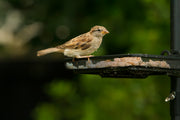
Let’s face it – birds are sloppy eaters. All that flapping, hopping and hanging at the feeder means a lot of contact ...
Seeds of thought - How wild birds grow forests
We’re taught from an early age that birds need trees to live in. But so too do trees often need birds to survive… ...
Returning to the nest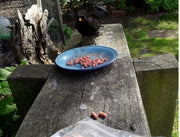
Welcoming family home for Christmas. We often talk about what it means to welcome wild birds into the family. What ...
Discomfort food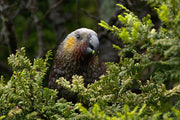
Killing with kindness. Tragic news of a kākā chick’s death in Auckland highlights the need for wider education on wha...
How to use a bird feeder correctly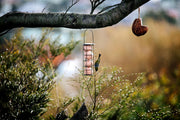
Feeding wild birds may seem easy at first glance. But in fact it requires more than just putting out bird seed. By us...
Spring is in the air...
So what do your local birds need? You’ll be noticing a lot more action in the garden with the arrival of warmer weath...
Wanted in winter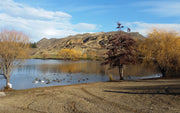
Provide an extra boost for wild birds when food is scarce. We all know that with low temperatures come cravings for h...


















